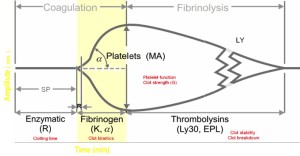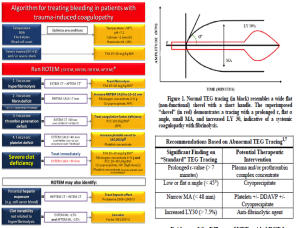Today we are in for a real treat! We have two of the smartest doctors to ever grace the stage here at the University of Maryland. First you will hear from Dr. Mark Walsh, an Emergency Medicine and Internal Medicine physician from Memorial Hospital, deep in Notre Dame territory of South Bend, Indiana. In addition to dominating the world of Emergency Medicine AND running his own medicine ward at Memorial Hospital, Dr. Walsh also maintains one of the largest independent coagulopathy research groups in the country. And, as you will hear, when he is not saving the trauma world one guided transfusion at a time, Dr. Walsh spends every moment he can assisting in the development of a hospital teaching service near Port-au-Prince, Haiti.
Also here to talk about his experience filling the gaps in the anesthetic management of the Haitian population is Dr. Rick Skupski. Dr Skupski is dually trained in both Anesthesia and Medicine, a rare find. This has led him down a very academic path in life as he works beside Dr. Walsh performing coagulopathy research at Memorial Hospital. He is also the main nidus behind taking the average EM doc and making them an anesthesia guru!
I assure you, the next 60 minutes will both touch your heart and stimulate your intellect.
Podcast: Play in new window | Download
Subscribe: Apple Podcasts | RSS
PART 1: TEG/ROTEM
- Pearl #1: Why choose TEG (or ROTEM?)
- Shows even early alterations in coagulopathy (TIC!)
- Results available within 20 minutes!
- PT/PTT/INR can take 90+ minutes…
- Shows even early alterations in coagulopathy (TIC!)
- Pearl #2: TEG= easy to understand!

- Pearl #3: TEG can guide treatment modalities in REAL time (Heres a FULL LECTURE!)
- Add in platelet mapping allows identification of TxA2 vs ADP inhibition (ASA and Clopidigrel use)
- Extremely important to assist in corrective treatments!
- Add in platelet mapping allows identification of TxA2 vs ADP inhibition (ASA and Clopidigrel use)
- Pearl #4: Regardless of which modality, TEG or ROTEM, the same information can be gathered (though TEG is SO much easier!)
PART 2: Emergency Physician General Anesthesia Syllabus (EP GAS)
- 1/12/2010: 7.0 earthquake led to the loss of approximately 240,000 human lives
- a number close to 3,000,000 were affected in total, many injured and without access to water, food, or healthcare
- An issue arose immediately: we have the surgeons, “we can’t find enough anesthesiologists”
- A unique thought came to the team from Memorial Hospital, Indiana: crash course for EM physicians
- An expedited Anesthesia Boot Camp
- A similar thought process to the training done during WWII to boost anesthesiologist numbers
- A unique thought came to the team from Memorial Hospital, Indiana: crash course for EM physicians
- Extremely simple process
- Rule #1: KISS (keep it simple stupid!)
- Always start in the same drug order
- Always use the same syringe volumes
- Rule #2: BVM skills > Intubation skills
- Until you can prove that you control the airway, you don’t own the airway!
- Rule #3: Always use the simple algorithm: MS MAID (and you will forget nothing)
- Machine check
- Suction
- Monitor
- Airway supplies
- IV line
- Drugs
- Rule #4: Always under the guidance of a board certified anesthesiologist
- So far: 135+ surgeries completed by EM physicians under the tutelage
- Countless lives saved!
- So far: 135+ surgeries completed by EM physicians under the tutelage
- Rule #1: KISS (keep it simple stupid!)
Suggested Readings
- Da Luz LT, Nascimento B, Shankarakutty AK, Rizoli S, Adhikari NK. Effect of thromboelastography (TEG®) and rotational thromboelastometry (ROTEM®) on diagnosis of coagulopathy, transfusion guidance and mortality in trauma: descriptive systematic review. Crit Care. 2014 Sep 27;18(5):518.
- Walsh M, Jbara M, Miller A, Lawson J. Thromboelastographic Goal-Directed Blood Component Therapy for Severe Hemorrhage. Blood Bulletin. March 2014.
- Marchbein D. Humanitarian surgery: a call to action for anesthesiologists. Anesthesiology. 2013 Nov;119(5):1001-2.
- Skupski R, Walsh M, Jbara M, Zimmer D, Patel BM, McCurcy MT, Lantry J, Fritz B, Davis P, Musunuru H, Newbold A, Toth A, Frechette R, Alexander T, Sundararajan M, Lovejoy J, Hottinger D, Capannari J, Kurcz R, Bernard G, Previl H. The Training and Performance of Emergency Physicians as Anesthetists for International Medical Surgical Response Teams: The Emergency Physician’s General Anesthesia Syllabus (EP GAS). Open Journal of Anesthesiology, 2014, 4, 53-61.






